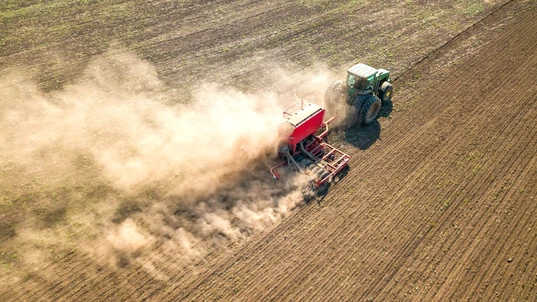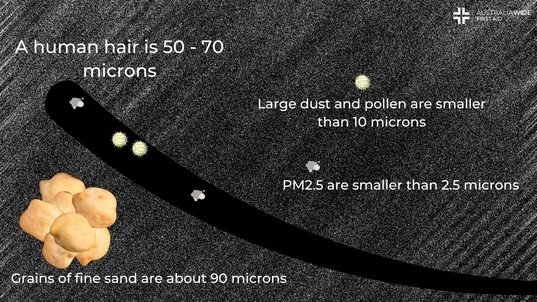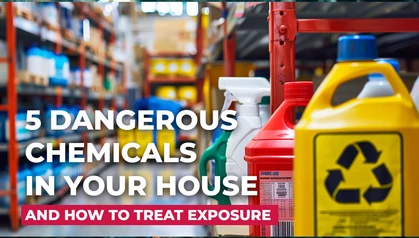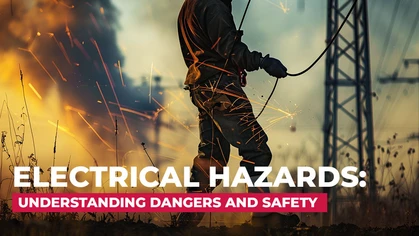Dust: the Hidden Australian Farm Menace

Danger

Dust is extremely common on farms, but it is too-often overlooked as a hazard.
Australia's vast agricultural landscapes are undeniably beautiful, but behind the idyllic façade lies a hidden menace that threatens the health and safety of those who toil the land. Dust, an insidious adversary, sweeps across the arid plains and into the lungs of Australian farms, leaving in its wake a trail of hazardous consequences that farmers and rural communities must grapple with daily. In this article, we delve into the perils of dust on Australian farms, exploring its origins, its detrimental effects on human health, and the crucial measures that should be taken to combat this relentless and pervasive challenge. Farm workers can be exposed to dust through many different sources:- Weed/pest control
- Mouldy areas
- Dry land
- Transporting grain and livestock
- Harvesting
- In the stockyard
Dust is Often Overlooked
Many farmers recognise that their occupation can be dangerous, but often don’t consider the hazards related to this unseen killer. One Australian study found that farmers were not adequately educated or protected from dust during harvest.- 40% were exposed to concentrations of inhalable particles above the Safe Work Australia standards for a 16-hour working day.
- 22% were exposed above adjusted standards for a 12-hour shift.
- 25% of farm owners didn't give new workers safety training, while the other 75% gave them arbitrary training.
- No workers were observed wearing respiratory protection when working outside their vehicles.
- Dead skin particles
- Mites, insects, and insect debris
- Respirable crystalline silica
- Seed coatings
- Fur and feather particles
- Fungal spores
- Bacteria
- Pesticide residues
- Pollen
- Soil particles
- Excreta from insects and animals
Symptoms of Dust Exposure
Early detection of dust exposure is crucial to mitigating the long-term health impacts. Symptoms will vary depending on which part of the respiratory system the particles have reached. Larger dust particles are more easily beathed out, swallowed harmlessly, or expelled through blowing your nose. The smaller the particle, though, the further into your system it can enter. Very small particles can penetrate deep into the lungs. Ultrafine particles can even be absorbed directly into the bloodstream. Symptoms of some health conditions may not appear until after years of exposure, but by then the damage is already done. Early symptoms can include:- Eye irritation
- Sneezing
- Coughing
- Hay fever or asthma attacks

Dust particles can enter the lungs, PM2.5 particles can enter the bloodstream.
Health Issues from Dust Exposure
Dust can harm more than just your breathing, and it's not only those with asthma or allergies who are in danger. Dust exposure can exacerbate existing respiratory issues and create new ones. Respiratory issues can develop rapidly or over prolonged exposure and can range from minor discomfort to life-threatening complications. Health effects that have been consistently associated with dust from farming activities include a range of occupational lung diseases. Other conditions are also common:- Shortness of breath
- Chronic phlegm
- Chronic cough
- Reduced lung function
- Wheezing
- Asthma, including occupational asthma
- Conjunctivitis
- Skin rashes
- Rhinitis
- Chronic bronchitis
- Chronic obstructive pulmonary disease (a long-term illness that makes breathing progressively harder)
- Organic dust toxic syndrome (a short-lived, sudden ‘flu-like’ fever, cough and chest discomfort)
- Extrinsic allergic alveolitis (also known as farmer’s lung – fever, cough, shortness of breath, joint/muscle pain, weight loss)
- Silicosis
- Lung scarring and fibrosis
- Cardiovascular and heart disease
- Cancer
- Reduced lifespan
How to Minimise Dust Hazards
There are a range of practices that farms can initiate to reduce the impact of dust hazards. It's important to educate and train about the dangers and safe practices for dust on the farm. Workers also need to be aware of the symptoms of respiratory illnesses that could arise from exposure.- Encourage a culture of safety on the farm.
- Provide appropriate respiratory protective equipment.
- Ensure all workers are using their respiratory protective equipment.
- Regularly maintain vehicles so that seals are not compromised.
- Increase ventilation in enclosed areas.
- Change processes to reduce dust at the source.
- Segregate processes and workers, including exposure duration.
- Maintain appropriate air quality monitoring.
First Aid for Dust Exposure
In the first instance, blowing your nose can help to expel inhaled dust. If you feel the need to cough, do not suppress it. It can also be helpful to rinse out the mouth. Eye irritation should be eased by rinsing the eyes with clean water. Move to a protected area, for example the enclosed cabin of a vehicle. Alternatively move to an area with cleaner air that is well ventilated. People with asthma should follow their action plan, including using their preventer as per doctor instructions. People with chronic obstructive pulmonary disease (e.g. emphysema or chronic bronchitis), and other chronic lung conditions, should continue their regular medication and follow their action plan. If any symptoms persist, medical advice should be sought. If a person is having difficulty breathing, seek medical attention promptly by calling Triple 0.
Originally published at
https://www.australiawidefirstaid.com.au/resources/dust-on-farms
as part of the Australia Wide First Aid Articles Library









